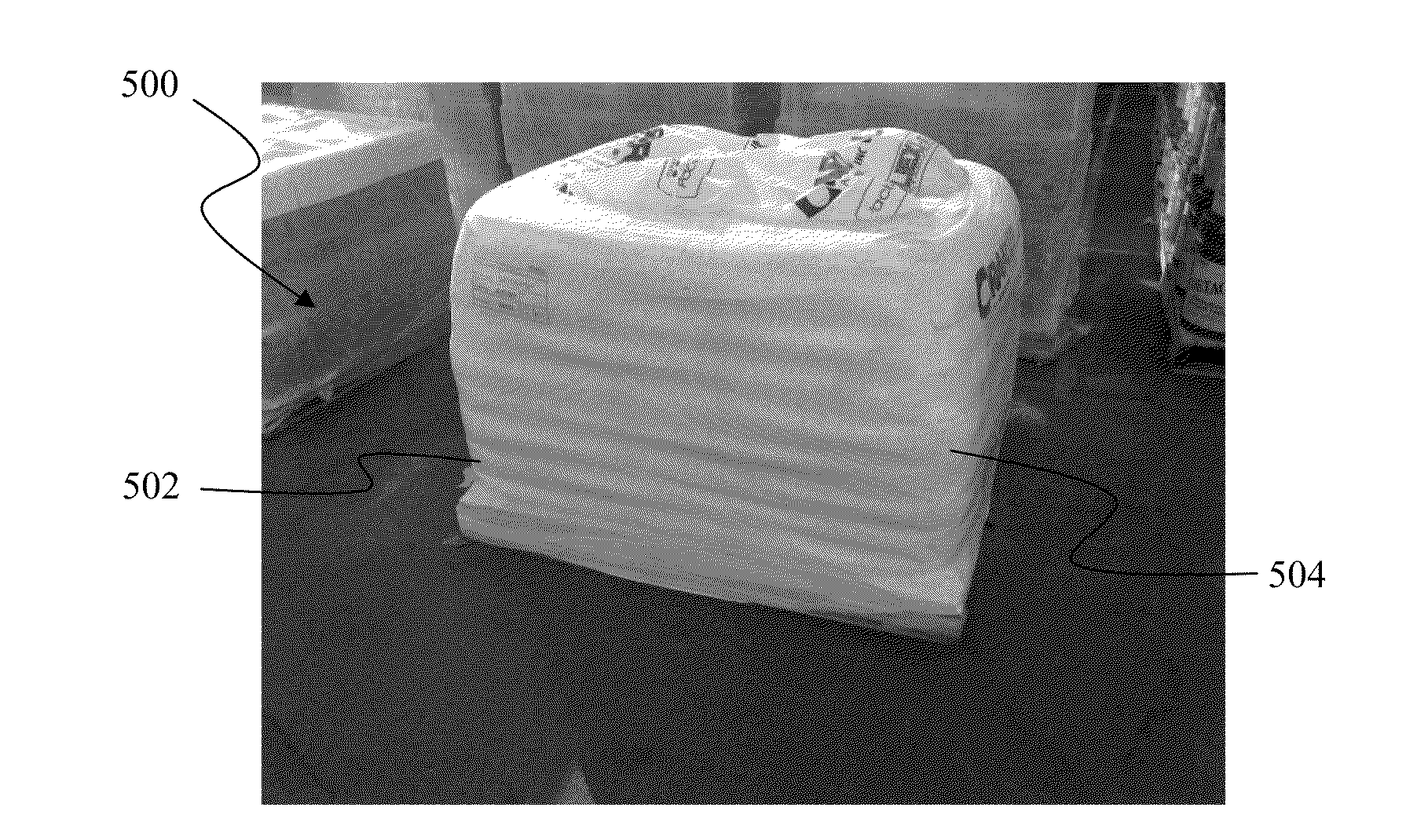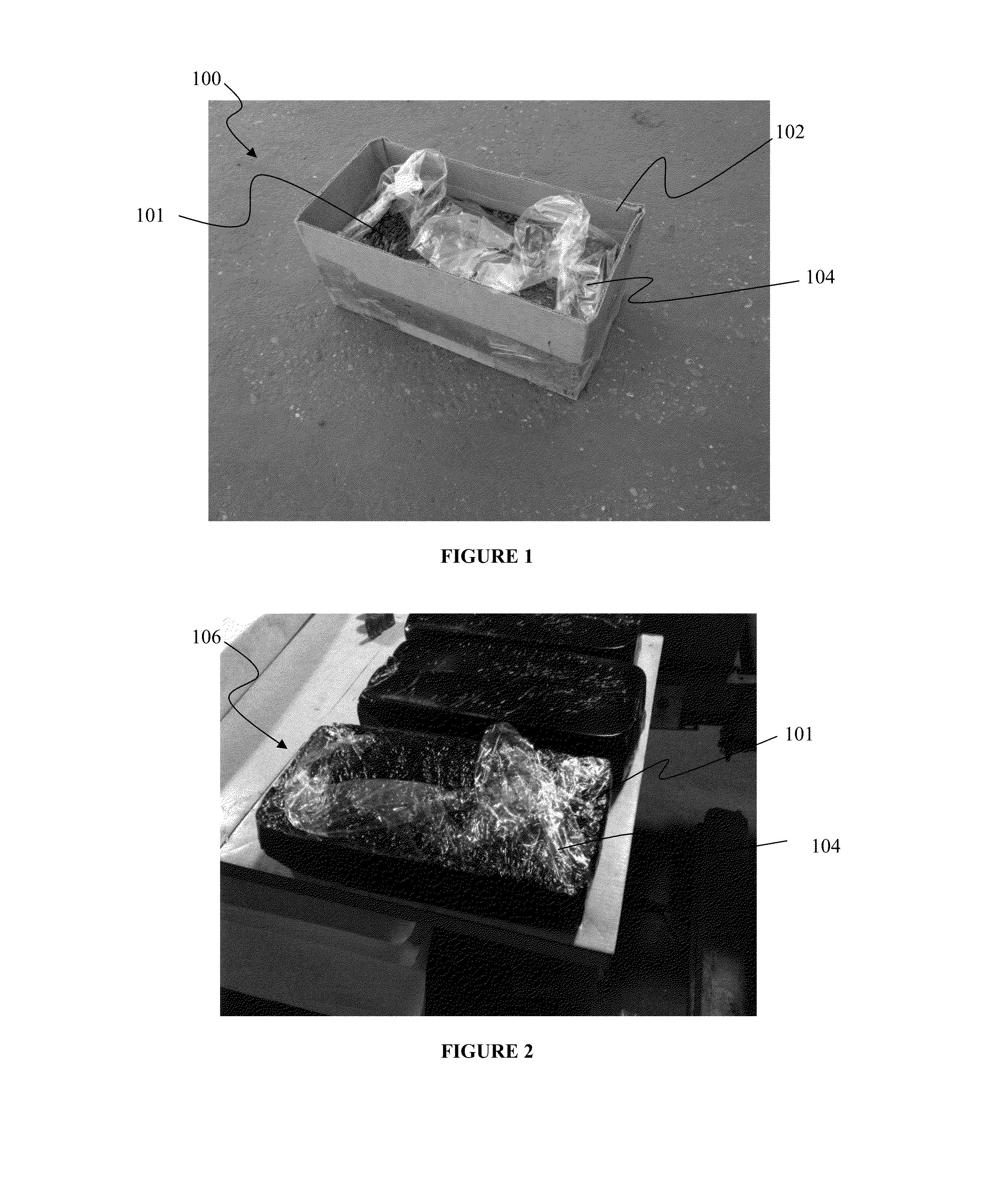Molten asphalt can be a difficult material to handle due to inherent characteristics of the material itself which makes containerization and transport of the molten asphalt a slow, messy and relatively costly operation if the container does not have adequate durability, strength, or integrity to contain the asphalt within.
However, asphalt does not necessarily remain solid until use, and can become flowable (i.e. cold flow) during storage and transport, before finally being melted to a molten state for use at the job site, creating various challenges in storage and transport.
However, these known packaging systems either fail to adequately address all issues, or create new issues during the process of solving other issues.
First, softer grades of molten asphalt can be pumped at temperatures as low as about 200° F.; however, it is very viscous at such low temperatures which makes the pumping thereof a slow process.
However, at the elevated temperatures at which the molten asphalt will more easily flow, such elevated temperatures can destroy certain containers that do not have sufficient integrity at such temperatures.
It will be seen from the above that a limiting factor in the prior art asphalt containerization process is the container itself which requires that the asphalt be cooled to temperatures low enough, depending on the packaging type, so that it will not destroy or degrade the containers, or, alternatively, require special container design that withstands these elevated temperatures, i.e. maintains container durability and integrity at such temperatures for extended periods of time.
However, due to the increased cost of steel to make the pails or drums, the container tends to be expensive.
Furthermore, once the asphalt has been removed from the container, the pail or drum then creates waste product that needs to be removed from the job site.
Finally, the drums or pails are relatively heavy, which can result in increased cost of transportation and storage, because, for example, a limited number of drums or pails can be transported or stored in a single load due to weight restrictions.
Although this container is significantly lighter and less expensive than the steel drum or pail container, it similarly suffers from the drawback of generating waste product at the job site.
Additionally, if the cardboard is not completely removed, it can cause contamination of the asphalt, and/or melting difficulties, such as clogging of plugging of the melting equipment.
Furthermore, this container is typically limited to the containerization of stiffer or flow resistant asphalts, such as roofing asphalt, as it may not have sufficient durability for containing, storing, and transporting some types of cold flowable asphalts.
However, this packaging, well suitable for containerization and stackability purposes creates other issues or problems, especially during transport and storage.
However, the structural integrity of the boxes can be compromised in a number of ways during storage and transport.
For example, if the cardboard boxes are exposed to water, the structural integrity of the cardboard boxes is compromised, thereby comprising the internal liner or bag filled with asphalt.
Similarly, if the box is punctured or ripped during storage or transport, the structural integrity of the cardboard box is compromised, as well as the internal liner or bag filled with asphalt.
The flow of the asphalt coupled with damage to the packaging during storage or transport can result in breached packaging.
A breached box with leaking product not only makes a mess in the storage facility or transport vehicle, but results in unusable product because the asphalt adheres to other boxes, making it impossible to remove the cardboard from the asphalt.
The asphalt is then unusable because it cannot be placed in a heating vessel or melter, because contamination of the cardboard can clog the heating vessel.
Furthermore, if the box is weakened by getting wet or otherwise damaged, the box can become unstable causing an entire pallet of material to slump, and even leak.
Any of these scenarios costs both time and money to replace unusable product and in restacking and clean-up.
When the molten asphalt is pumped into the plastic liner bags during containerization it will adhere thereto which makes subsequent removal difficult if not impossible to accomplish.
Another problem with this packaging system is that once the liner with asphalt has been removed, discarded boxes are generated, causing handling and disposal issue out on the job site.
Furthermore, if there are not adequate facilities closely available to dispose of or store the emptied boxes, the boxes must then be transported to such facility to dispose of or store the boxes, which c
 Login to View More
Login to View More 


